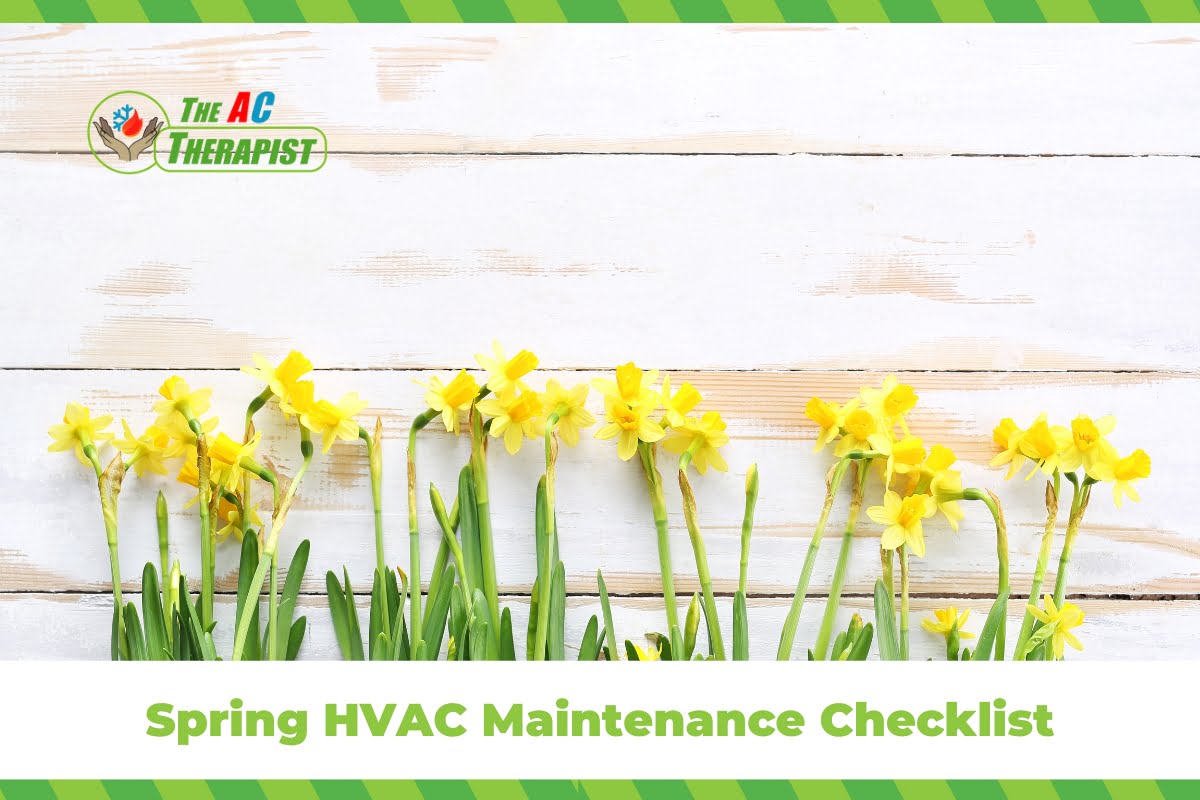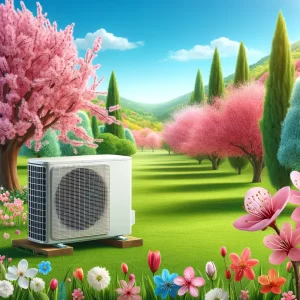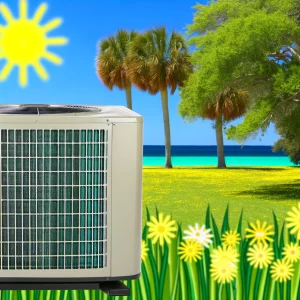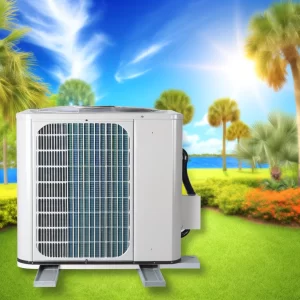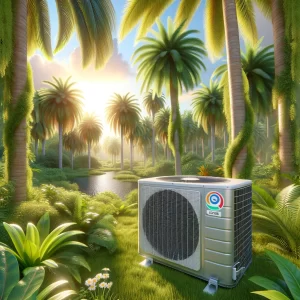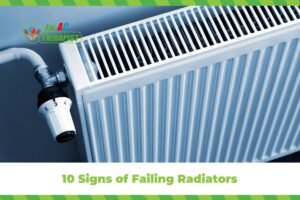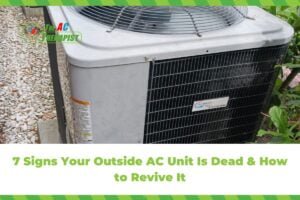Spring HVAC Maintenance Checklist
As the chill of winter fades and the warmth of spring beckons, it’s the perfect time to turn our attention to the silent workhorse of our homes: the HVAC system. Spring signifies renewal and preparation, making it the ideal season to ensure your heating, ventilation, and air conditioning (HVAC) system is primed to provide comfort and efficiency in the months ahead. The transition from heating to cooling demands not just a switch of settings but a thoughtful inspection and maintenance of your entire system. This proactive approach is crucial not only for the system’s efficiency and longevity but also for the comfort and health of your living environment.
A well-maintained HVAC system stands as a guardian of your home’s air quality and temperature control. It operates more efficiently, translating into significant energy savings and a reduction in utility bills. Regular maintenance helps catch potential issues early, preventing costly repairs and inconvenient breakdowns during peak usage times. Moreover, a clean and well-tuned system is better at filtering out pollutants and allergens, ensuring the air you breathe is clean and healthy. As we prepare to embrace the warmer days, taking the time to care for your HVAC system can lead to a season of blissful comfort, safeguarding your home against the unpredictability of spring weather while optimizing your living space for well-being and efficiency.
The Importance of Spring HVAC Maintenance
Spring emerges as a pivotal season for HVAC maintenance, acting as a bridge between the cold embrace of winter and the upcoming warmth of summer. This period of transition from heating to cooling systems presents a unique opportunity to prepare your HVAC unit for the increased workload ahead. Maintenance during this time is not just a matter of convenience but a proactive step toward ensuring the system’s optimal performance, efficiency, and reliability throughout the warmer months.
The significance of spring maintenance lies in its timing. As temperatures begin to rise, the demand for your cooling system escalates. Ensuring your system is inspected, cleaned, and tuned up in spring can help avoid the discomfort and inconvenience of a malfunctioning unit when you need it most. This preventive care helps identify and address any wear and tear from the winter season, setting the stage for a seamless transition to cooling operations.
Spring maintenance also plays a crucial role in tackling seasonal challenges, particularly allergens and humidity control. Spring is notorious for the surge in pollen and other allergens that can infiltrate homes, affecting indoor air quality and, consequently, the health and comfort of residents. A well-maintained HVAC system, with clean filters and ducts, can significantly reduce the presence of these allergens inside your home. The system can effectively capture and remove pollen, dust, and other particles, ensuring cleaner, healthier air.
Furthermore, as temperatures rise, so does the humidity level in many regions. Excess humidity can create a host of problems in homes, from discomfort and health issues to the exacerbation of mold and mildew growth. A properly maintained HVAC system is equipped to manage indoor humidity levels effectively, maintaining a comfortable and healthy living environment. Regular maintenance ensures that the system’s dehumidification components are functioning correctly, providing a critical defense against humidity-related challenges.
In summary, spring presents an ideal and strategic time for HVAC maintenance, preparing your system not only to switch gears from heating to cooling but also to address the unique demands of the warmer months. This preventive approach is vital for ensuring the system’s efficiency, prolonging its lifespan, and maintaining a comfortable, healthy indoor environment free from allergens and humidity issues.
Professional HVAC Inspection and Maintenance
At the onset of spring, scheduling a professional HVAC inspection and maintenance visit is a critical step in ensuring your system’s readiness for the upcoming season. This proactive measure is more than just a routine checkup; it’s a comprehensive care plan that can significantly enhance the efficiency, longevity, and reliability of your HVAC system.
What a Professional Maintenance Visit Includes
A typical professional HVAC maintenance visit is thorough and multifaceted, covering several key areas:
- System Inspection: The technician will inspect the entire HVAC system, including both indoor and outdoor units, to ensure everything is in working order. This includes checking electrical connections, motor function, and overall system performance.
- Cleaning: Over time, dust and debris can accumulate in various parts of the HVAC system, including the air filters, condenser coils, and evaporator coils. A professional cleaning removes these obstructions, improving airflow and system efficiency.
- Tuning: The maintenance visit also includes tuning the system to ensure optimal operation. This can involve adjusting thermostat settings, tightening electrical connections, and lubricating moving parts to reduce friction.
- Filter Replacement: A critical part of maintaining air quality and system efficiency is ensuring that air filters are clean and functional. Professionals will either clean or replace air filters as needed.
Special Services
Beyond the standard maintenance tasks, professional visits can also include specialized services that are crucial for system health and efficiency:
- Duct Cleaning: Ductwork can harbor dust, allergens, and even mold, significantly impacting air quality. Professional duct cleaning ensures that air flows freely and cleanly throughout your home, improving both comfort and health.
- Refrigerant Level Checks: Proper refrigerant levels are essential for your HVAC system’s cooling efficiency. A technician will check these levels and recharge the system if necessary, ensuring your unit operates effectively and efficiently during the warmer months.
Opting for a professional HVAC inspection and maintenance visit at the start of spring is an investment in your system’s health, your home’s comfort, and your peace of mind. This essential service ensures that your HVAC system is clean, efficient, and ready to handle the demands of the upcoming season, while also extending its lifespan and preventing unexpected failures.
DIY HVAC Maintenance Checklist
While professional HVAC maintenance is crucial for the overall health and efficiency of your system, there are also several important steps homeowners can take on their own. Engaging in regular DIY maintenance can help prolong the life of your system, improve air quality, and ensure it runs efficiently. Here’s a DIY HVAC maintenance checklist to keep your system in top shape throughout spring and beyond:
1. Change Air Filters Regularly
- Why It’s Important: Dirty air filters restrict airflow, reduce system efficiency, and worsen indoor air quality. Regularly changing your filters can prevent these issues and help your HVAC system operate at peak performance.
- DIY Tip: Check your air filters every month, especially during high-use seasons like summer and winter. Replace them at least every 90 days, or more often if you have pets or suffer from allergies.
2. Clean Around Outdoor Units
- Why It’s Important: Leaves, dirt, and debris around your outdoor unit can restrict airflow and reduce the system’s ability to cool your home efficiently.
- DIY Tip: Keep the area around your outdoor HVAC unit clear of debris. Trim any bushes or shrubs to maintain a clearance of at least 2 feet around the unit to ensure proper airflow.
3. Inspect and Clean Air Vents
- Why It’s Important: Blocked or dirty air vents can restrict airflow and lead to uneven temperatures throughout your home.
- DIY Tip: Regularly inspect all air vents and registers for dust buildup or obstructions. Use a vacuum to clean dust from the vents to improve air circulation.
4. Check and Tighten Electrical Connections
- Why It’s Important: Loose electrical connections can cause unsafe operation of your system and reduce the life of its components.
- DIY Tip: With the system turned off, check accessible electrical connections to ensure they are tight and secure. If you’re unsure or uncomfortable with this step, it’s best to consult a professional.
5. Inspect the Condensate Drain
- Why It’s Important: A clogged condensate drain can lead to water damage in your home and increase indoor humidity levels.
- DIY Tip: Check the condensate drain for clogs and clear any blockages you find. A mix of vinegar and water poured down the drain can help prevent algae and mold growth.
6. Monitor Thermostat Settings
- Why It’s Important: An incorrectly set thermostat can lead to unnecessary energy usage and increased utility bills.
- DIY Tip: Ensure your thermostat is set to a comfortable temperature that doesn’t overwork your system. Consider upgrading to a smart thermostat for better control and efficiency.
7. Listen for Unusual Noises
- Why It’s Important: Strange sounds from your HVAC system can indicate potential problems.
- DIY Tip: Pay attention to any unusual noises coming from your HVAC unit. Buzzing, rattling, or whistling sounds can be signs of issues that may require professional attention.
Upgrading Your HVAC System for Spring
As the seasons change, upgrading your HVAC system for spring can significantly enhance your home’s comfort and energy efficiency. Upgrades not only ensure your system runs smoothly but also can lead to considerable savings on energy bills and improve the overall air quality in your home. Here are some key upgrades to consider for optimizing your HVAC system this spring:
1. Install a Smart Thermostat
- Benefits: A smart thermostat offers greater control over your home’s temperature and climate, adapting to your habits and preferences for improved comfort and efficiency. These devices can learn your schedule and adjust heating and cooling accordingly, reducing energy consumption when you’re not home.
- Why Upgrade: With the ability to control your HVAC system remotely and receive detailed reports on your energy usage, a smart thermostat can help you make more informed decisions about your heating and cooling, leading to significant energy savings.
2. Consider Zone Control Systems
- Benefits: Zone control systems allow you to heat or cool different areas of your home independently, providing personalized comfort and reducing energy waste in unoccupied spaces.
- Why Upgrade: Installing zone controls can enhance the functionality of your existing HVAC system, making it more efficient and adaptable to your family’s needs, ensuring that everyone enjoys their ideal temperature without overheating or overcooling other areas.
3. Upgrade to a High-Efficiency HVAC System
- Benefits: Newer, high-efficiency models use less energy to operate, reducing your carbon footprint and monthly energy bills. They also often come with advanced features for better climate control and comfort.
- Why Upgrade: If your HVAC system is old and frequently in need of repairs, upgrading to a high-efficiency model can be a cost-effective decision in the long run, providing you with a more reliable, energy-saving, and effective heating and cooling solution.
4. Improve Indoor Air Quality with Add-Ons
- Benefits: Upgrades like air purifiers, dehumidifiers, and upgraded air filters can significantly improve the air quality in your home, reducing allergens, dust, and other pollutants.
- Why Upgrade: Springtime can exacerbate allergies and respiratory issues due to higher pollen counts and humidity levels. Enhancing your HVAC system with air quality add-ons can create a healthier indoor environment for you and your family.
5. Install UV Lights
- Benefits: UV lights installed in the HVAC system can kill bacteria, viruses, mold, and other pathogens in the air and on surfaces within the ductwork, significantly improving indoor air quality.
- Why Upgrade: With concerns about air quality and illness transmission at an all-time high, installing UV lights offers an extra layer of protection against airborne contaminants, ensuring your home is not only comfortable but also safe.
Preparing for Spring Allergies
Spring brings with it a bloom of nature and warmer weather, but for many, it also ushers in the season of allergies. Pollen, mold, and other airborne allergens become more prevalent, making indoor air quality a top priority for those sensitive to these irritants. Preparing your HVAC system to combat spring allergies is a proactive step toward maintaining a comfortable and healthy home environment. Here’s how you can prepare:
1. Replace HVAC Air Filters with High-Efficiency Filters
- Action: Upgrade your HVAC air filters to high-efficiency particulate air (HEPA) filters or those with a high MERV (Minimum Efficiency Reporting Value) rating that can capture smaller particles more effectively.
- Benefit: These filters are more efficient at trapping allergens such as pollen, dust mites, and pet dander, significantly reducing the number of irritants circulating in your home.
2. Schedule Regular HVAC Maintenance
- Action: Have a professional perform a thorough cleaning and maintenance of your HVAC system before the start of the allergy season.
- Benefit: A clean system with well-functioning components will circulate air more effectively, preventing the buildup of allergens in your ducts and throughout your home.
3. Consider Installing a Whole-Home Air Purifier
- Action: Invest in a whole-home air purifier that works in tandem with your HVAC system to filter out allergens from the air circulating through your home.
- Benefit: Air purifiers can remove a broader range of allergens, including those too small for even high-efficiency filters to catch, thus providing an added layer of protection against allergies.
4. Maintain Proper Humidity Levels
- Action: Use a dehumidifier to keep indoor humidity levels between 30-50%.
- Benefit: This range discourages the growth of mold and dust mites, both common triggers for allergy and asthma symptoms.
5. Seal Leaks and Improve Ventilation
- Action: Seal leaks around doors, windows, and ductwork to prevent outdoor allergens from entering. Ensure proper ventilation to reduce indoor humidity and prevent the accumulation of indoor pollutants.
- Benefit: Minimizing the entry of outdoor allergens and ensuring fresh air circulation can significantly reduce allergy symptoms indoors.
6. Clean Ducts and Vents
- Action: Have your ducts professionally cleaned to remove any dust, mold, or debris that may have accumulated over time.
- Benefit: Clean ducts prevent the distribution of allergens throughout your home, ensuring that air circulating through the HVAC system is clean.
7. Use UV Lights
- Action: Install UV lights in your HVAC system to kill mold, bacteria, and viruses.
- Benefit: UV lights can improve indoor air quality by reducing the microbial buildup in your HVAC system, thus decreasing the potential triggers for allergies and respiratory issues.
Energy-Saving Tips for Spring
As the spring season blossoms, bringing with it a fresh start and warmer weather, it’s the perfect time to consider energy-saving tips that can lead to a more efficient and cost-effective home. With spring in the air, homeowners are looking for ways to enjoy the comfort of their living spaces without the worry of high energy bills. Here are essential energy-saving tips designed to enhance your home’s efficiency this spring:
1. Embrace Natural Ventilation
With the arrival of spring, take advantage of the mild weather to reduce dependence on your HVAC system. Opening windows to create a cross-breeze allows for natural cooling, reducing the need for air conditioning during those pleasantly warm spring days.
2. Update to a Smart Thermostat
Spring into action by upgrading to a smart thermostat. These devices can adjust the temperature based on your daily schedule and preferences, ensuring energy isn’t wasted cooling an empty home. By optimizing your HVAC usage this spring, you can achieve significant energy savings.
3. Spring Clean Your HVAC Filters
A simple yet effective spring maintenance task is to check and replace your HVAC filters. Clogged filters make your system work harder, increasing energy consumption. A clean filter ensures smooth airflow and system efficiency, making it a spring essential for energy savings.
4. Seal Leaks and Drafts
As you spring into home maintenance, don’t overlook the importance of sealing leaks and drafts around windows and doors. This prevents cool air from escaping and warm air from entering, reducing the workload on your HVAC system during those warm spring days.
5. Consider Energy-Efficient Window Treatments
Investing in energy-efficient window treatments can block out heat during spring, keeping your home cooler without overworking your air conditioning. Options like thermal curtains can be a stylish and effective way to enhance your home’s energy efficiency this spring.
6. Schedule Professional HVAC Maintenance
Ensure your HVAC system is primed for performance this spring by scheduling a professional maintenance check. A well-maintained system operates more efficiently, keeping your spring energy costs in check.
7. Utilize Ceiling Fans
Ceiling fans can complement your HVAC system beautifully during spring. They use less energy and can make a room feel cooler by circulating air. Remember to switch the fan direction to rotate counter-clockwise in spring and summer, creating a cooling breeze.
8. Plant Shade Trees
Looking ahead, planting shade trees can be a long-term energy-saving strategy. As they grow, they’ll provide natural cooling shade for your home during the spring and summer months, reducing the need for artificial cooling.
9. Adjust Your Water Heating
Spring into savings by adjusting your water heater to a lower setting. Many households have their water heater set higher than necessary, contributing to unnecessary energy use. Lowering it can result in substantial energy savings throughout spring and beyond.
10. Lighten Up with LED Bulbs
With longer daylight hours in spring, take the opportunity to switch to energy-efficient LED bulbs. They use less power and last longer, providing bright, cost-effective lighting perfect for those beautiful spring evenings.
Spring into Comfort: The Ultimate HVAC Checklist with The AC Therapist
As the spring season ushers in a time of renewal and warmth, ensuring your HVAC system is primed for performance is key to enjoying a comfortable and efficient home. From embracing natural ventilation to upgrading to smart thermostats and conducting professional maintenance, each step on this spring checklist contributes to a seamless transition into the warmer months. Remember, regular maintenance and strategic upgrades not only enhance your system’s efficiency but also prevent unexpected repairs, keeping your spring and summer worry-free.
The AC Therapist stands ready to assist you in tackling your spring HVAC maintenance needs. With our expertise and commitment to your comfort, we’ll ensure your system runs smoothly, so you can focus on enjoying the beautiful spring weather. Let us help you spring into comfort this season with a well-maintained HVAC system that saves energy, reduces costs, and improves your home’s air quality. Contact The AC Therapist today, and take the first step towards a more comfortable and efficient spring.

